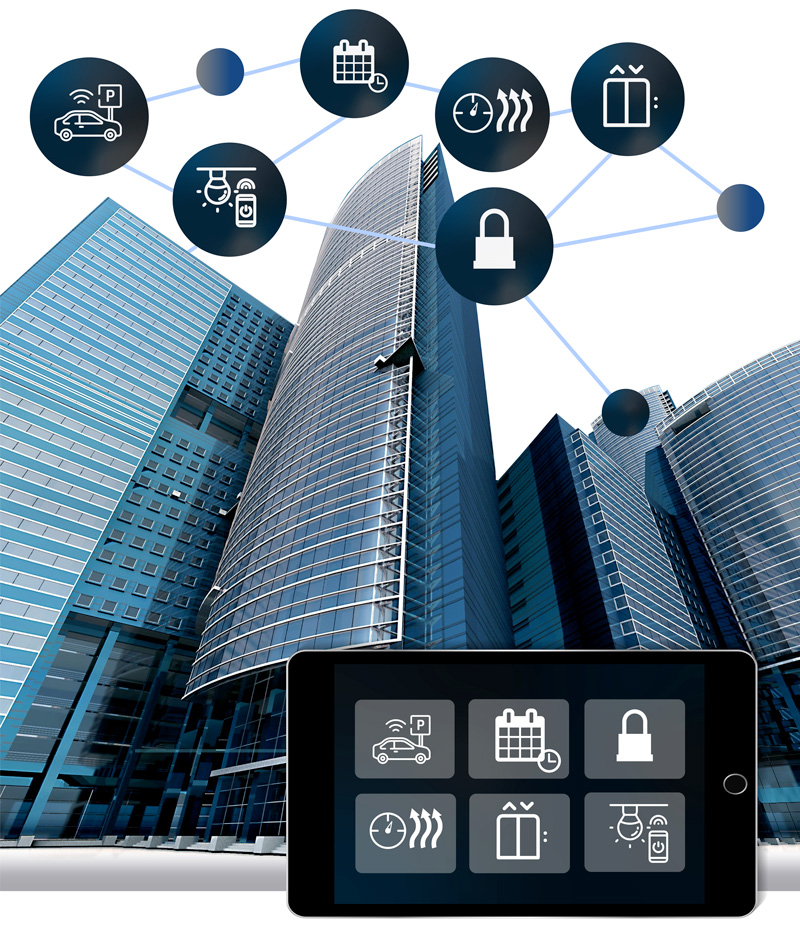How Can Security in Smart Buildings Be Improved in the Australian Market?
/in Blog Post /by Magnus Thurley
How Can Security in Smart Buildings Be Improved in the Australian Market?
As Australia's buildings grow smarter, the need to protect them from digital threats is becoming more urgent.
This article provides a strategic blueprint for building owners, focusing on the integration of comprehensive cybersecurity and physical security strategies. By drawing on the Australian Signals Directorate’s (ASD) Essential Eight mitigation strategies and beyond, we aim to fortify the digital and physical assets of smart buildings against the evolving landscape of cyber threats, ensuring their operations are resilient, efficient, and secure.
The Need for Advanced Security in Smart Buildings
Smart buildings represent a convergence of technology and infrastructure, designed to improve efficiency, sustainability, and convenience. However, this integration of digital technologies also introduces new vulnerabilities, making comprehensive security measures indispensable. In Australia, the rise in smart building developments comes with an increased risk of cyber-attacks and physical security breaches, necessitating a multi-faceted approach to security.
Cybersecurity: The Digital Shield
With the Australian Cyber Security Centre (ACSC) reporting a significant rise in cyber-attacks against Australian entities, the need for robust cybersecurity measures is clear. Cybersecurity in smart buildings encompasses a range of strategies, from securing network infrastructures to implementing stringent access controls and encryption protocols. These measures are designed to protect sensitive data and prevent unauthorised access to building management systems.
Physical Security Technologies: Beyond the Lock and Key
Modern physical security technologies offer far more than traditional lock-and-key mechanisms. Integrated surveillance systems, access control technologies, and environmental monitoring tools together provide an overview of physical security status in real time. These technologies not only deter unauthorised access but also enhance the ability to respond swiftly to potential breaches.

The Role of Digital Protection and Building Management Systems
Digital protection focuses on safeguarding the integrity of the software and networks that underpin smart building operations. This includes ensuring that communication between devices and the central building management system is secure and resilient against cyber threats. The building management system (BMS) requires rigorous security protocols to prevent tampering or unauthorised access, which could compromise building operations.
What is the Essential Eight?
The Australian Signals Directorate (ASD) has developed prioritised mitigation strategies, known as the Strategies to Mitigate Cyber Security Incidents, aimed at assisting organisations in protecting themselves against a variety of cyber threats. Among these strategies, the Essential Eight emerges as the most productive.
These strategies offer foundational cybersecurity measures that include:
- Patch Applications: Regularly update applications to rectify security vulnerabilities.
- Patch Operating Systems: Ensure operating systems are up-to-date with the latest security patches.
- Multi-Factor Authentication (MFA): Implement MFA to add an additional layer of security beyond just passwords.
- Restrict Administrative Privileges: Limit administrative rights to those who truly need them to reduce the risk of malicious software installation or data manipulation.
- Application Control: Control which applications are allowed to execute, preventing the execution of unapproved or malicious programs.
- Restrict Microsoft Office Macros: Only enable macros from trusted sources to prevent macro-based malware.
- User Application Hardening: Configure web browsers and other applications to reduce vulnerability.
- Regular Backups: Ensure data is backed up regularly, enabling recovery in the event of data loss or ransomware.
Implementing these strategies in the Essential Eight Maturity Model is crucial for enhancing cyber resilience. The Essential Eight Assessment Process Guide offers a framework for evaluating implementations of these strategies, ensuring a robust defence against cyber threats
Strategic Considerations for Australian Enterprises
In navigating the complexities of smart building security, Australian businesses must consider several key strategic directions: Comprehensive Risk Assessments, Regulatory Compliance, Stakeholder Education and Awareness, and Investment in Integrated Security Solutions. Deploying integrated security solutions that encompass both cybersecurity and physical security technologies provides a unified defence mechanism against a range of threats.
Conclusion
As Australia continues to evolve with the proliferation of smart buildings, the integration of comprehensive security strategies becomes increasingly important. By addressing both digital and physical vulnerabilities with a holistic approach, organisations can protect their assets and ensure the resilience and sustainability of their operations.
Engage with Operational Intelligence today to navigate the complexities of smart building technology and secure a future where your building operations are optimised for success. Discover more about their services and how they can elevate your project by getting in touch today.
Contact us to transform your building into a smart building
Operational Intelligence are leaders in technology strategy and innovative design, trusted around the world and backed by over 30 years of experience. We have enabled three Smart Cities, seven 6-Star NABERS rated precincts, sixty-seven 5-Star NABERS rated precincts and over 3,700 smart solutions worldwide.
Contact our team for more information on how you can optimise your building utilising the most advanced smart building technology and solutions.

Disclaimer: The content within is the opinion of the author and engineering team of Operational Intelligence.
Get in Touch with Operational Intelligence
CONTACT US TO START YOUR JOURNEY WITH OPERATIONAL INTELLIGENCE
CONTACT US
MENU
FOLLOW

